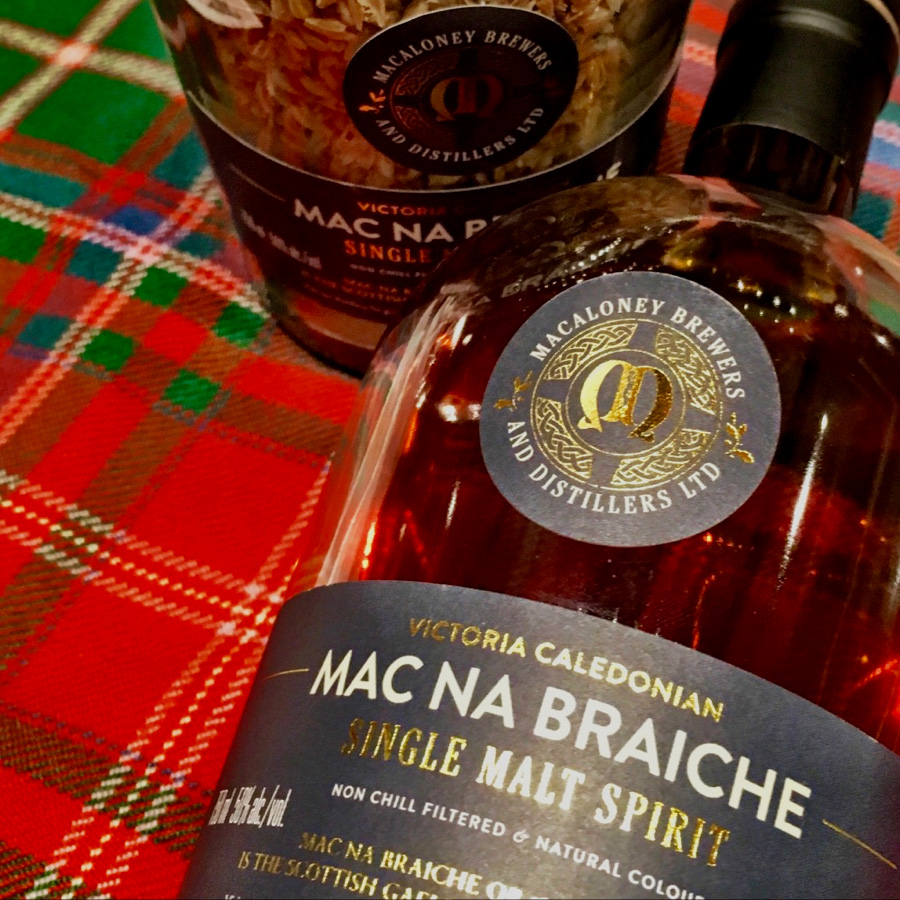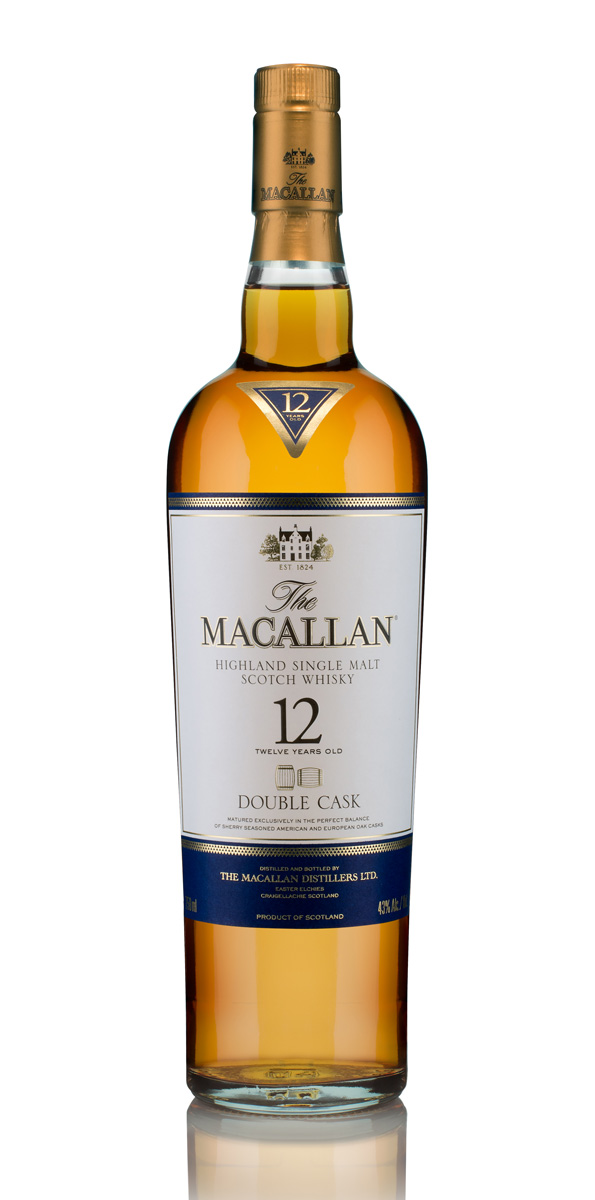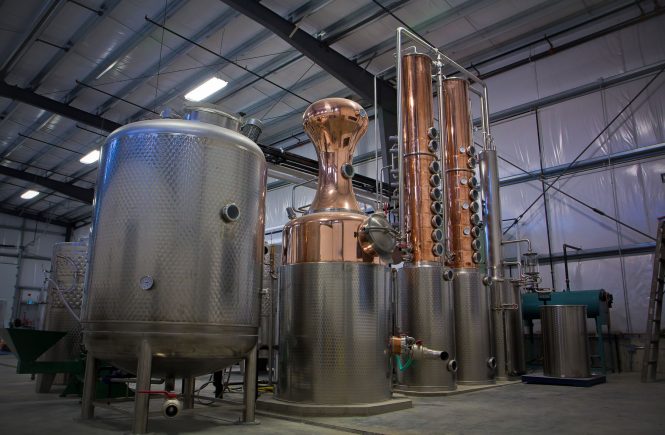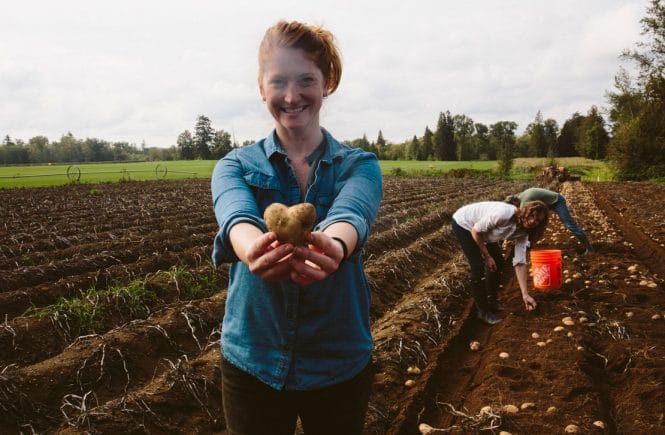If you thought the debate over whisky and age was resolved, a B.C. newcomer and Scotch mainstay start the discussion over again

You might forgive Andrew Campbell Wall if he seems just a wee bit bullish.
Wall is the Macaloney Ambassador for the neophyte Victoria Caledonian Distillery, which is based in B.C.’s capital city, but is Scottish through and through. Just to make the point, Wall is wearing his Campbell kilt and full regalia as he samples his wares at this year’s BC Distilled festival.
While he pours me a dram of Mac na Braiche Single Malt Spirit, he can barely contain his excitement.

Mac na Braiche, he explains, means “single malt.” “A single distillery, single cask, single malt, distilled entirely from Canadian product, matured in American white oak, which was once a Portuguese dry red wine cask, and distilled in an imported Scottish still by a third-generation Scottish master distiller,” Wall describes it.
Is it time to rethink not just the rules, but the preconceptions around whisky and age?
But what is truly singular about this spirit is the way it is breaking long-held beliefs about minimum-aging requirements in Canada, at the same time as discussions about age statements are heating up again in Scotland. It raises the question: Is it time to rethink not just the rules, but the preconceptions around whisky and age?
In Canada and Scotland, a grain spirit must be aged at least three years in wooden casks to be called a “whisky.” And, in reality, most whiskies need at least a few more years’ maturation to compete with heavy hitters on the world stage.
Yet the Mac na Braiche seems to disprove that. The sample Wall pours me had been in the barrel for just 17 months, but it tastes much older. It sports fruity aromas with hints of stone fruit and red grape notes before a palate that’s smooth, fruity, gently spicy—and remarkably approachable. Samples already sent out for professional review were even younger, but performed well in blind tastings beside five- to eight-year-old comparisons.
“We sent cask samples to Whisky Intelligence, WhiskyCast and Whisky Advocate magazines,” says Wall. “They scored it even with Bowmore Tempest and Macallan Gold.” These are 10-year-old Scotch single malts that score in the 86- or 87-point range, which is a respectable barometer of comparison. As Caledonian notes on its website: “Scores in the high 80s are typically reserved for 12- and 18-year-old Scotches considered to be great single malts.”
It would appear that the upstart from Victoria has achieved something for which many strive, but few succeed.
Meanwhile, Caledonian’s early success comes at a time when the merits of age-stated versus No Age Statement (NAS) whiskies are once again being debated.

In 2012, the Macallan Gold heralded that distiller’s move to NAS labelling in what was considered at the time a bold—and for many aficionados a heretical—move.
As aged whisky stocks diminished faster than distilleries could replace them, Macallan’s 1824 series abandoned its traditional aged labelling for a series of colours (Gold, Amber, Sienna, Ruby), intended to suggest taste and implied age, as opposed to a definitive statement. It wasn’t long before other majors (including Highland Park, Diageo and Grant’s) jumped on the NAS wagon, preferring it as a far more flexible system.
In blind tastings, NAS whiskies actually perform quite well beside their age-stated counterparts. However, the jury on NAS is still out, especially as some distillers, including Macallan, with its recently released 12-Year-Old Double Cask, have indicated a shift back toward the traditional system.
A couple of other realities might have dampened the enthusiasm for NAS whiskies. One in particular is that international whiskies have jumped in popularity, especially thanks to award-winning whiskies from areas as diverse as India and Sweden.
Is it possible that the major producers misjudged the thirst for their new approach and are now having to back-pedal to rebuild their loyal clientele? Quite possibly.
There’s no question the “farm to flask” star is ascendant.
In B.C., it’s hard to ignore the enthusiasm that’s greeted the likes of Caledonian, Shelter Point, de Vine, Okanagan Spirits and other craft players now coming on stream. While they may never compete volume wise with the Macallans of this world, there’s no question the “farm to flask” star is ascendant.
As far as the age-stated versus NAS discussion goes, truly, perhaps it’s a question of beauty is in the eye of the beholder: If what’s in the glass meets or surpasses expectations, maybe it’s a moot point.
And if a good part of that is plain old Scots know-how, then all power to you.
CHEATING TIME: It’s time spent in wooden casks that transforms raw spirit into whisky. But who wants to wait years and years for a dram? While many distillers have experimented with different ways to speed up the process, it seems some Spanish brandy researchers have cracked the code. They added oak chips to grape distillate, then blasted them with ultrasound, which ruptures the plant tissues and releases bioactive compounds similar to those in long-aged whiskies. The result? Brandy that—apparently—tastes as good as those aged several years.
ROLL OUT THE BARREL: It’s not just the age; it’s also the vessel. By law, Scotch whisky must be aged in oak barrels for at least three years; typically, those are second-use bourbon or sherry casks. Bourbon, on the other hand, must be aged in previously unused, charred wood vessels, typically American oak. And Canadian whisky must be aged at least three years in small wood casks of any sort.
—by Tim Pawsey




